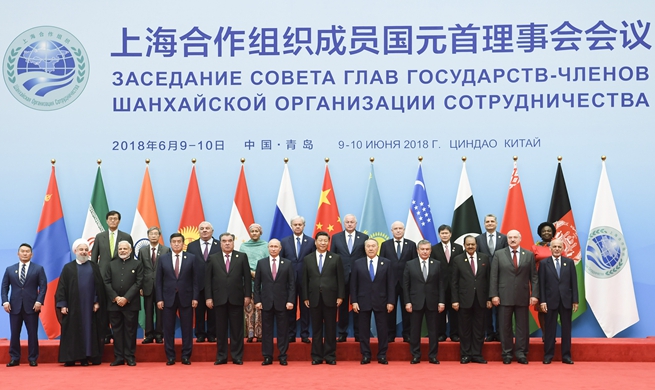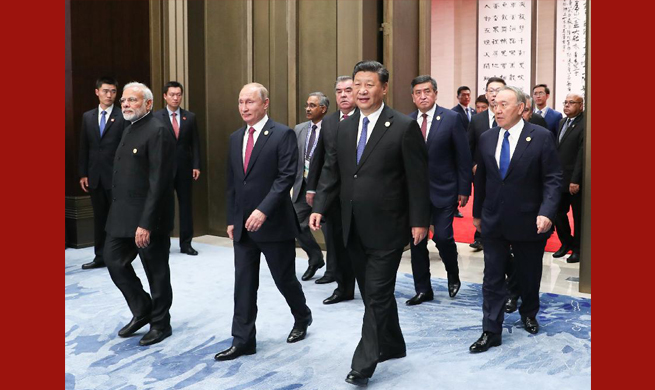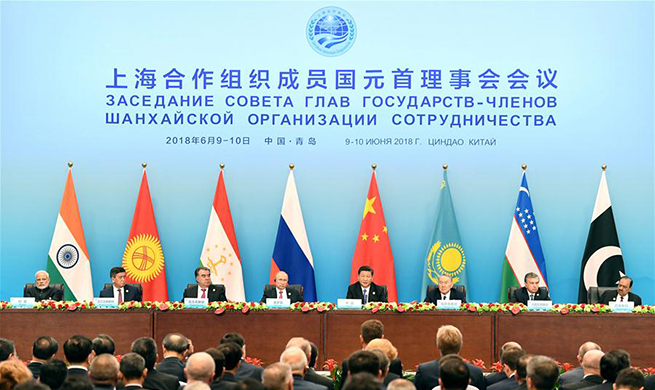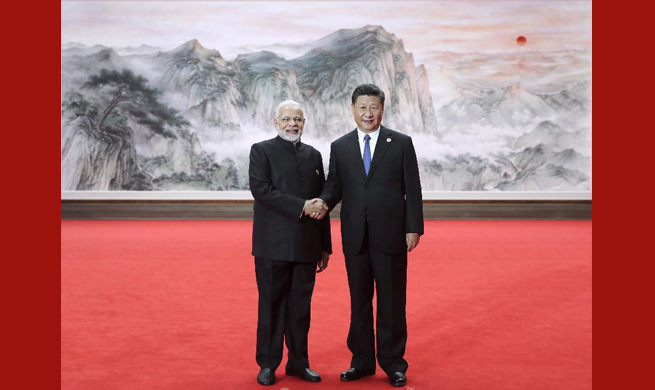BEIJING, June 11 (Xinhua) -- Years ago, students at Hongban Elementary School would bring both a schoolbag and a woven bag into classroom, the latter filled with potatoes, corn cobs and charcoal to make lunch at school.
Financial aids to the school in southwest China's Guizhou Province have now changed the school's dining for good.
A kitchen with refrigerators and disinfection equipment helps provide nutritious meals, such as minced meat stirfried with beans, green pepper and shredded potato, as well as cabbage and tofu soup.
For several years government organs and NGOs have been making efforts to help fund and improve schools in poor rural regions
Nutritional programs have improved the diets of rural students in half the country since 2011, with the central government spending almost 160 billion yuan (about 25 billion U.S. dollars) on 134,000 schools.
"China's expenditure on students with difficulties reached 140 billion yuan in 2017, a 62-percent increase from 2012," said Zheng Fuzhi, assistant minister of education. "The government has allocated 3 billion yuan for educational poverty relief in regions of extreme poverty this year."
Increased budget and favorable polices are enhancing teaching quality in these regions.
Since 2013, living allowances have been provided to teachers in rural areas. As of May 2017, over 1.3 million teachers in extremely impoverished areas received an average of 2,400 yuan, and in some cases up to 6,000.
In 2006, a teaching program was put in place to encourage university graduates to teach rural primary and junior high schools.
Graduates spend three years in rural schools and favorable policies help them restart their careers after the teaching posts.
Currently, this program covers close to 1,000 counties in 22 provinces. The ministry plans to add 10,000 teachers in 2018.
In April 2018, the Chinese air force donated 15 million yuan to the China Children and Teenagers' Fund, targeting education in impoverished regions important to the military in its formative years, ensuring children there can go to school.
The donation will cover 3,600 college, middle school and primary school students, and help build 13 schools.
Over the 24-year history of the project, a total of 140 million yuan has been donated by soldiers and officials from the air force, helping more than 28,800 children finish school.
China's non-profit organizations have also helped students in financial difficulty.
Launched in 1989 by the China Youth Development Foundation (CYDF), Project Hope helps children in poor areas gain greater access to education.
As of 2017, Project Hope had received 14.04 billion yuan in donations and aided 5.75 million students in financial difficulty. A total of 19,814 primary schools were also built.
"Project Hope is a non-government welfare cause that has the most extensive social participation and widest influence in China," the CYDF told Xinhua.
From 2005 to 2017, Project Hope raised 2.4 billion yuan to help over 820,000 students afford college education, and nearly 46 percent of the beneficiaries came from a family with an annual income of less than 5,000 yuan.
Many beneficiaries that have changed their fate due to poverty relief have themselves gone on to help students with financial difficulties.
Su Mingjuan, from the hinterland of the Dabie Mountains, became a symbol of Project Hope when an innocent photo of her moved the country in the 1990s.
After graduation from college, Su was employed by a bank, and every year she provide 1,000 yuan to aid students in need.
She once told media that it was Project Hope that had changed her life, cause she could have been denied secondary education in high school without the help of the program.
It is a long and arduous path but through concerted efforts and measures from the government, the public and NGOs, the future for rural education in China looks bright.
















